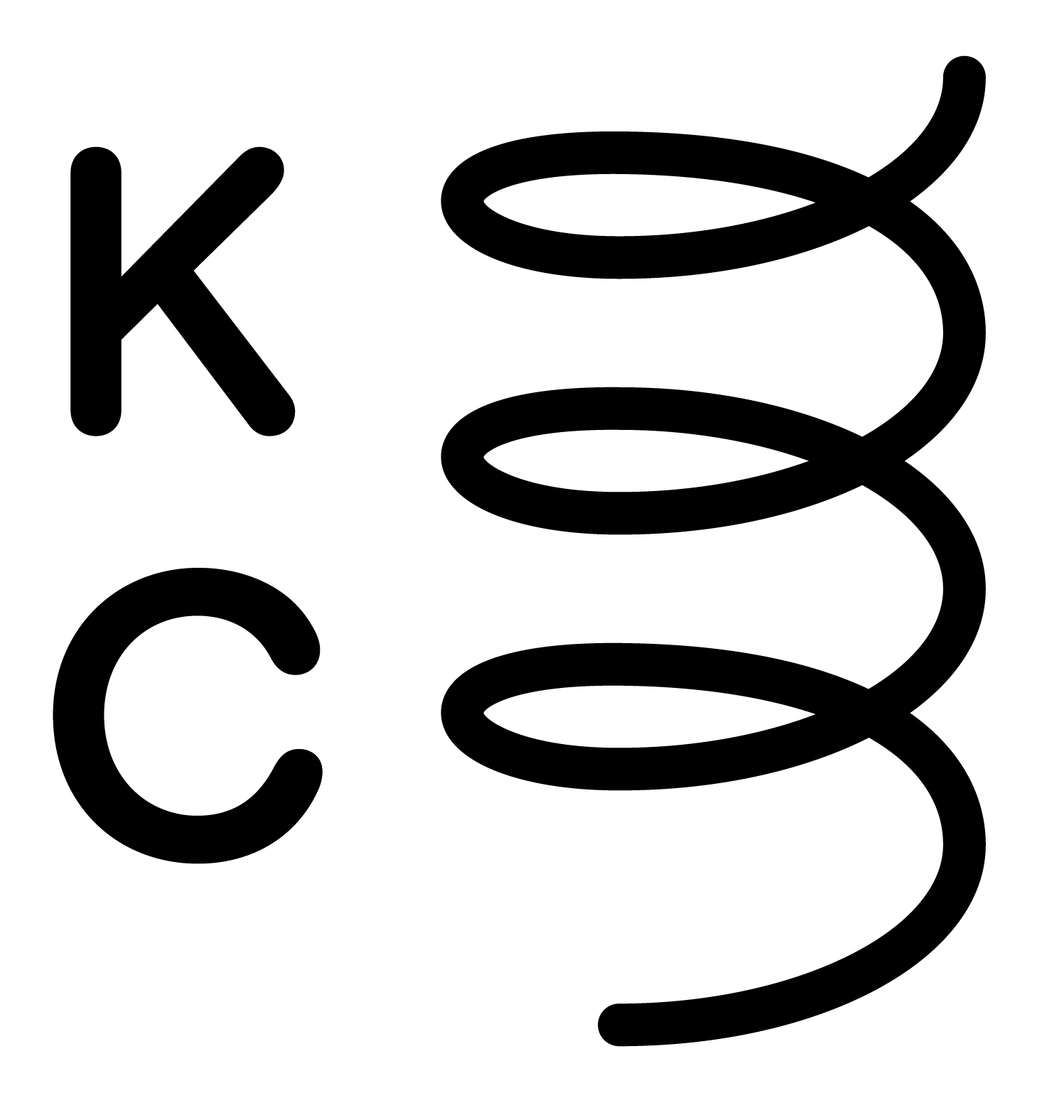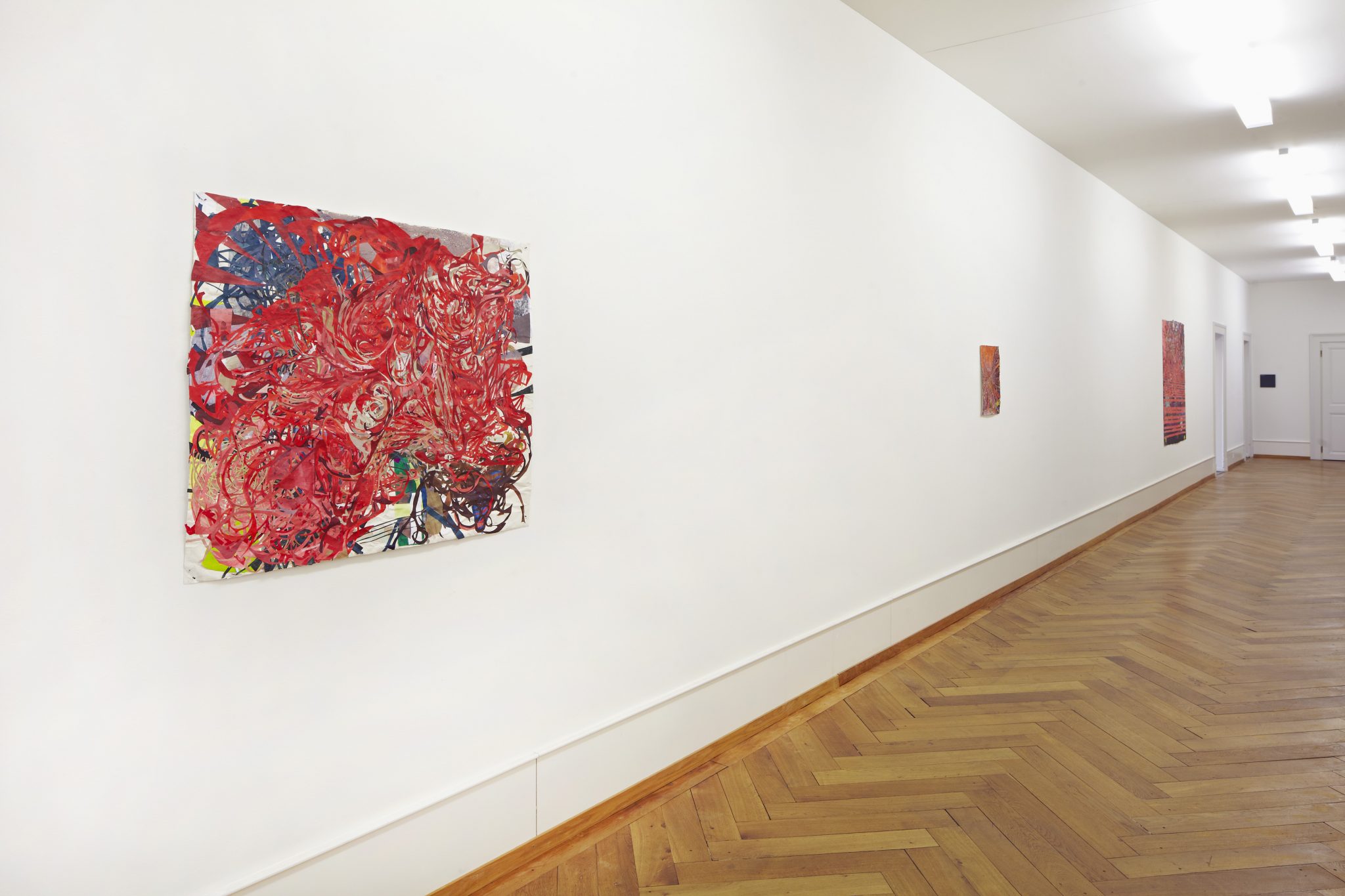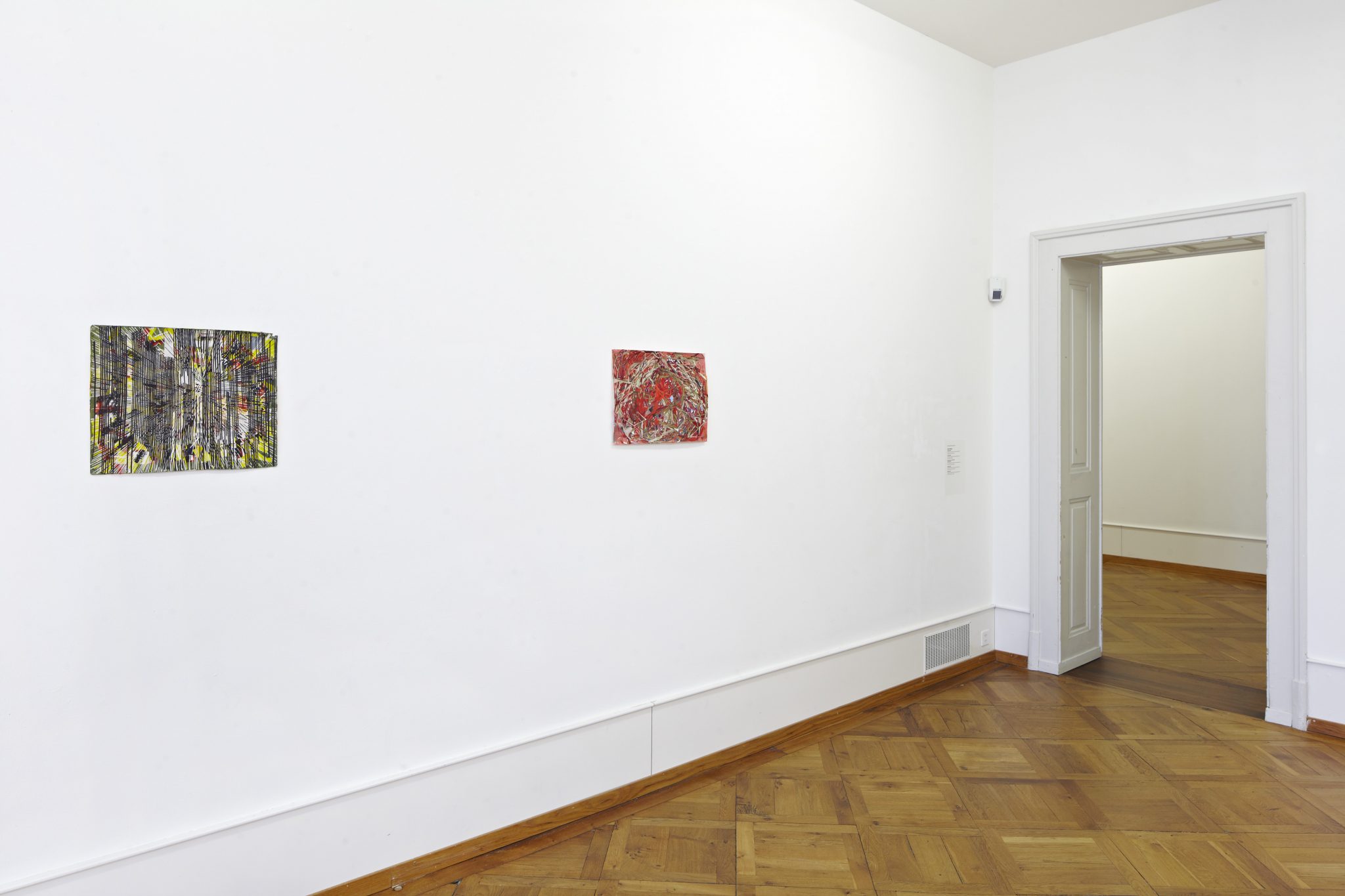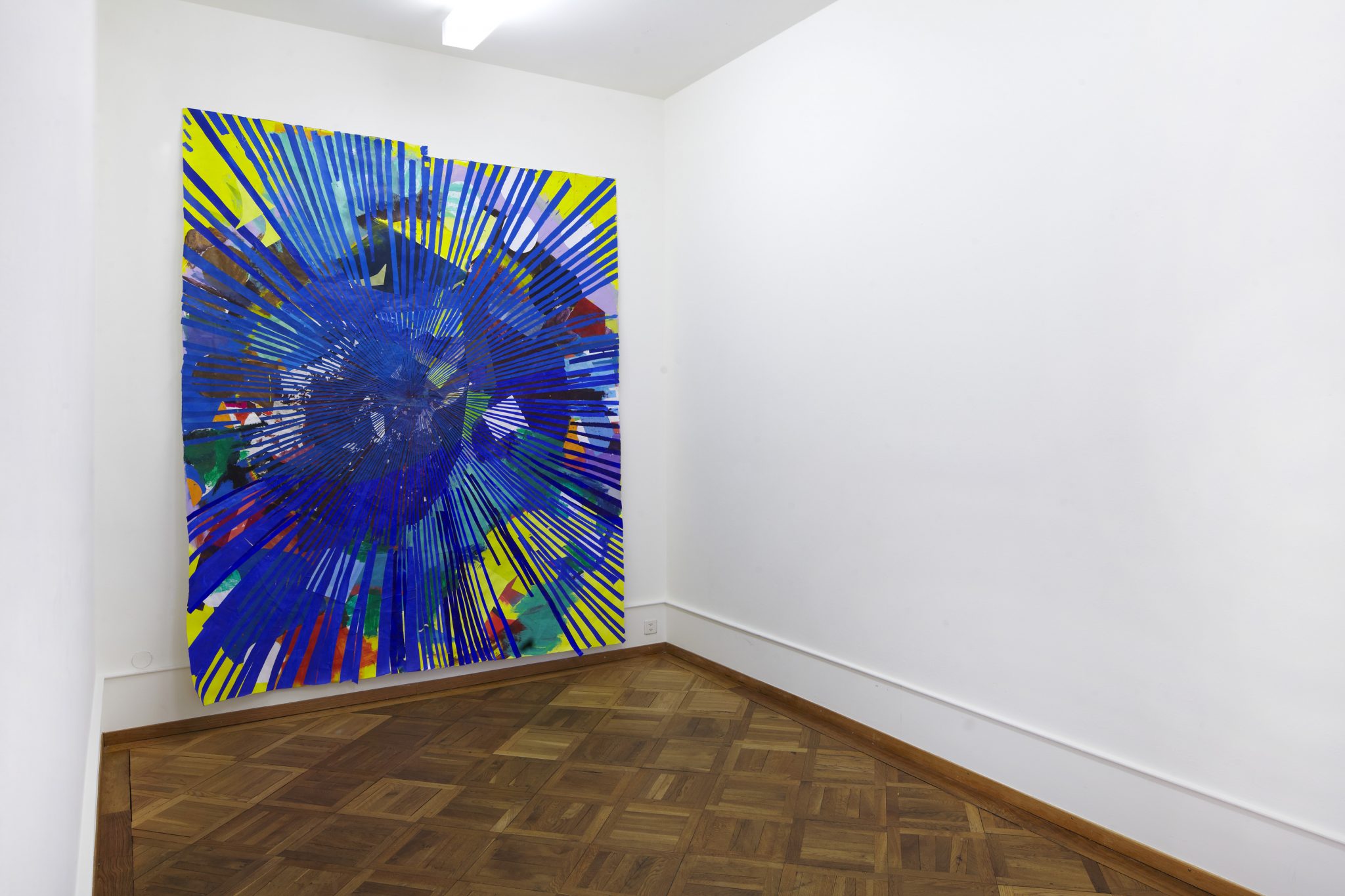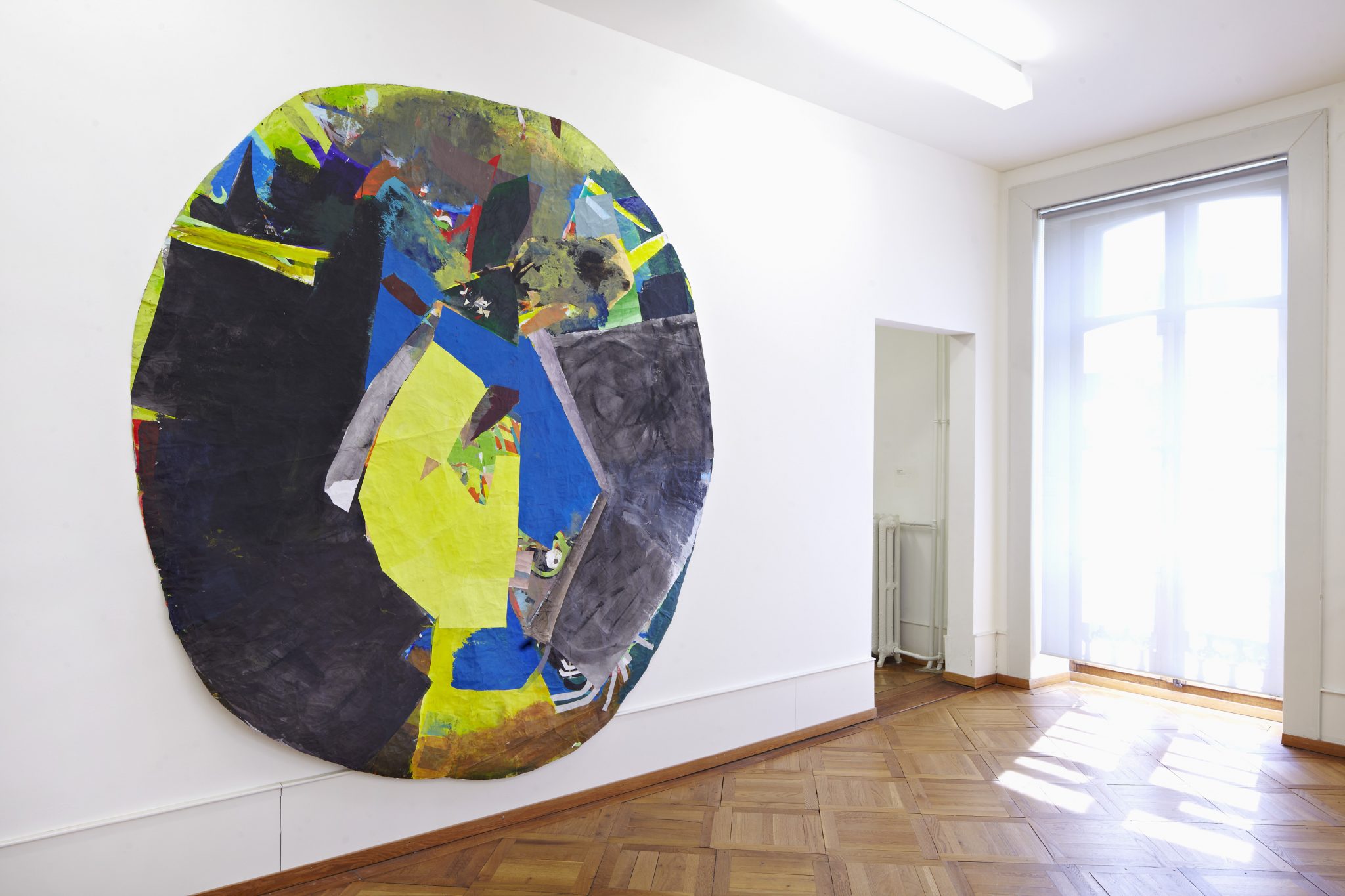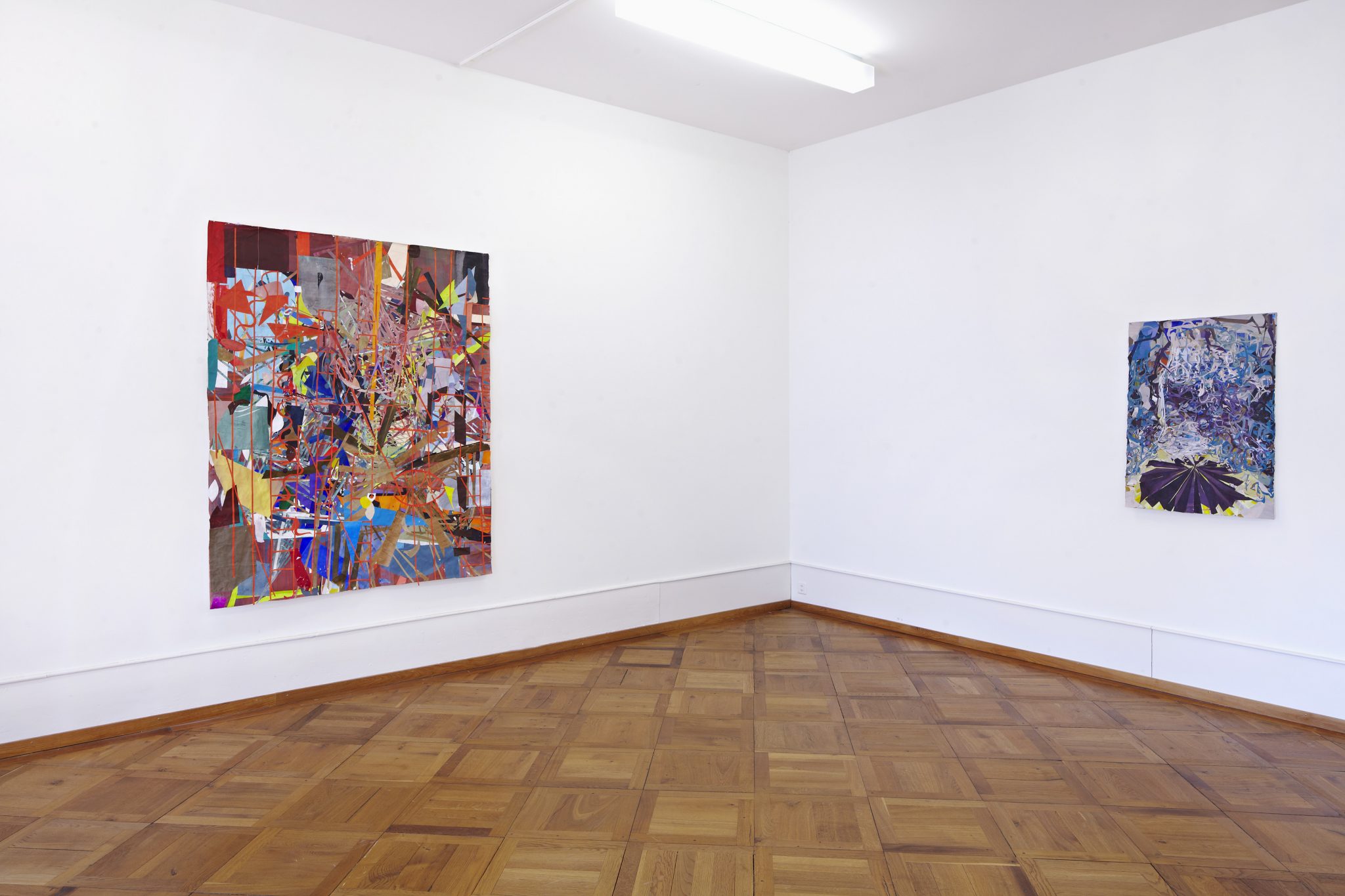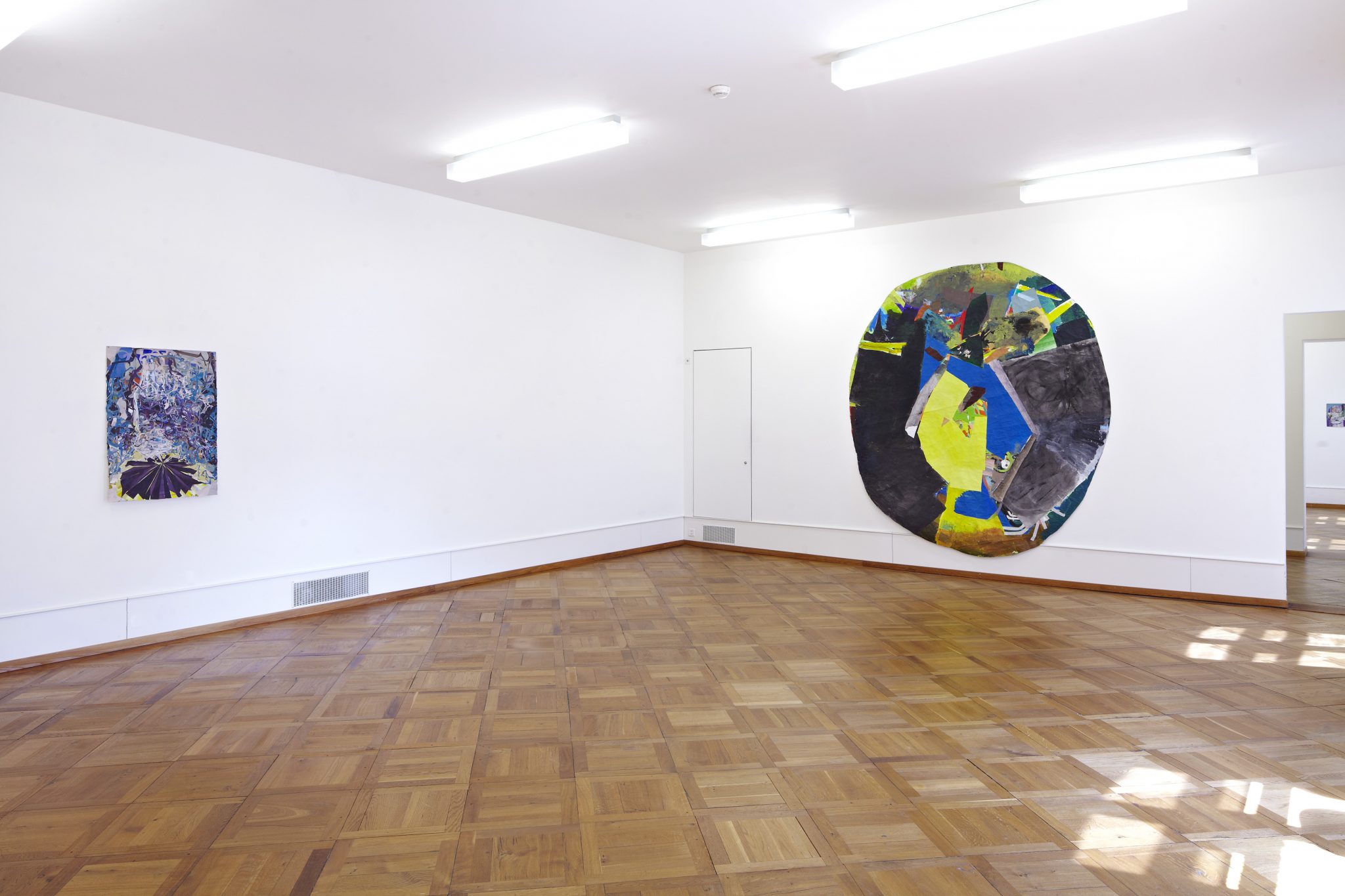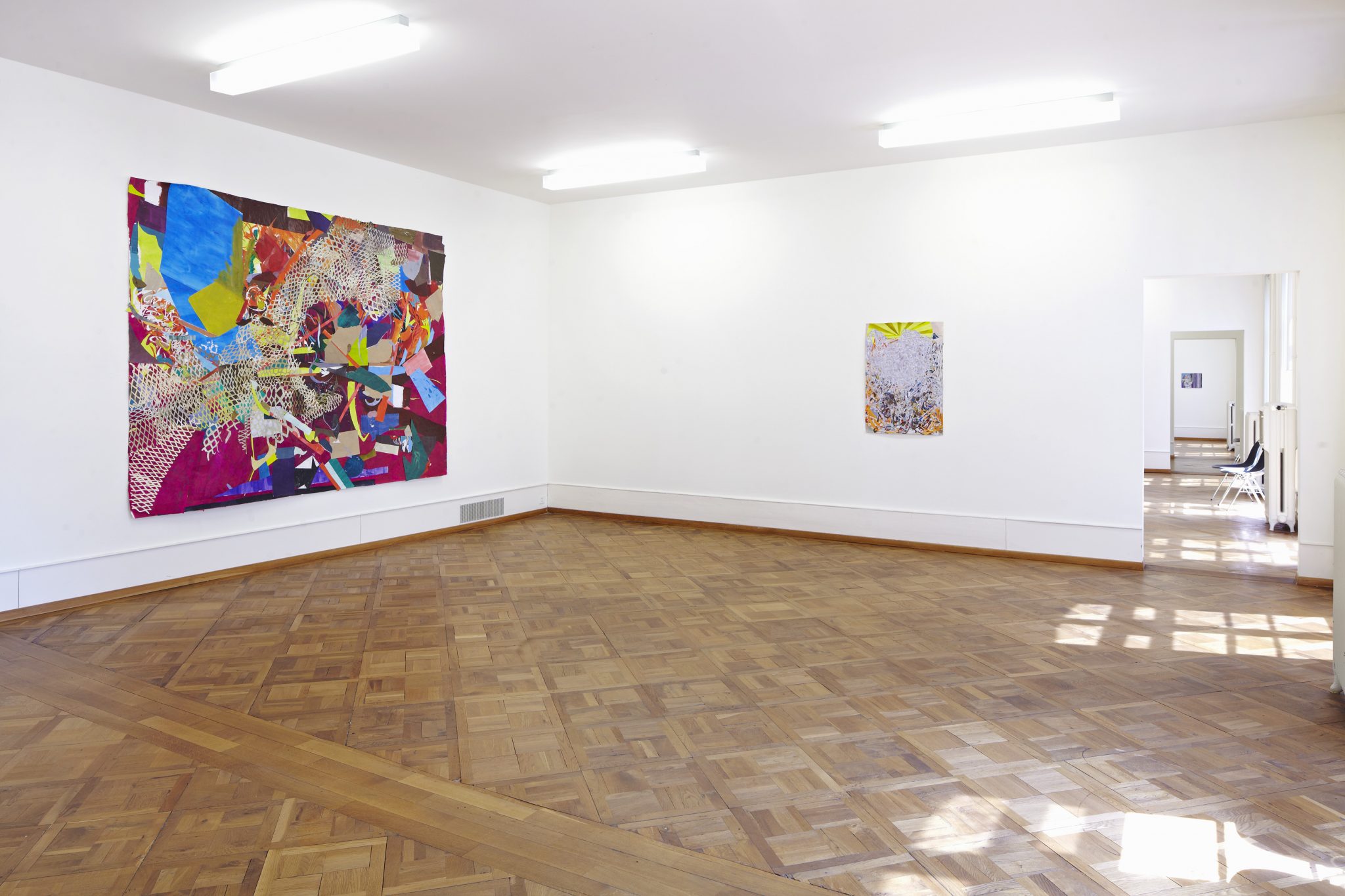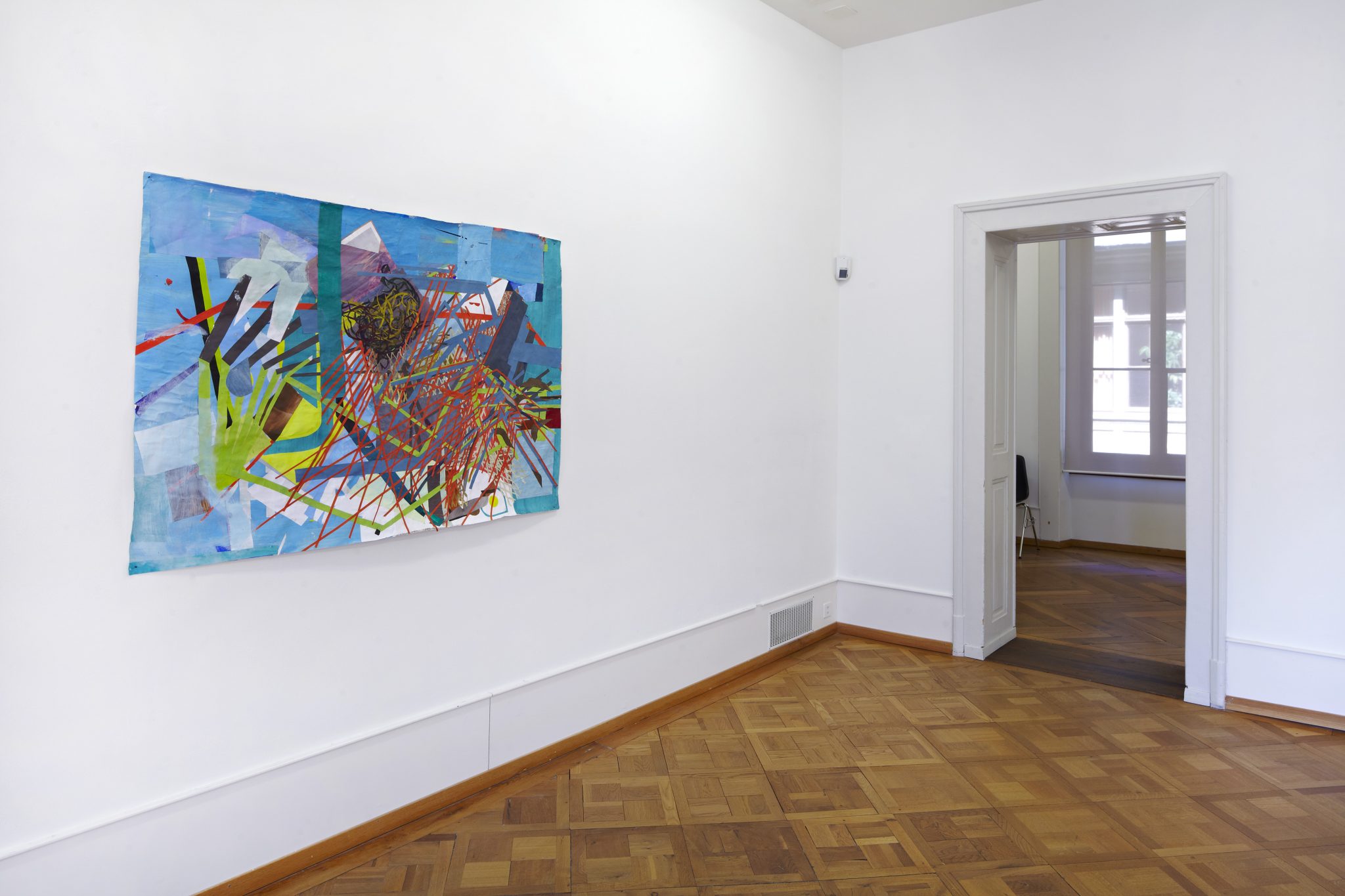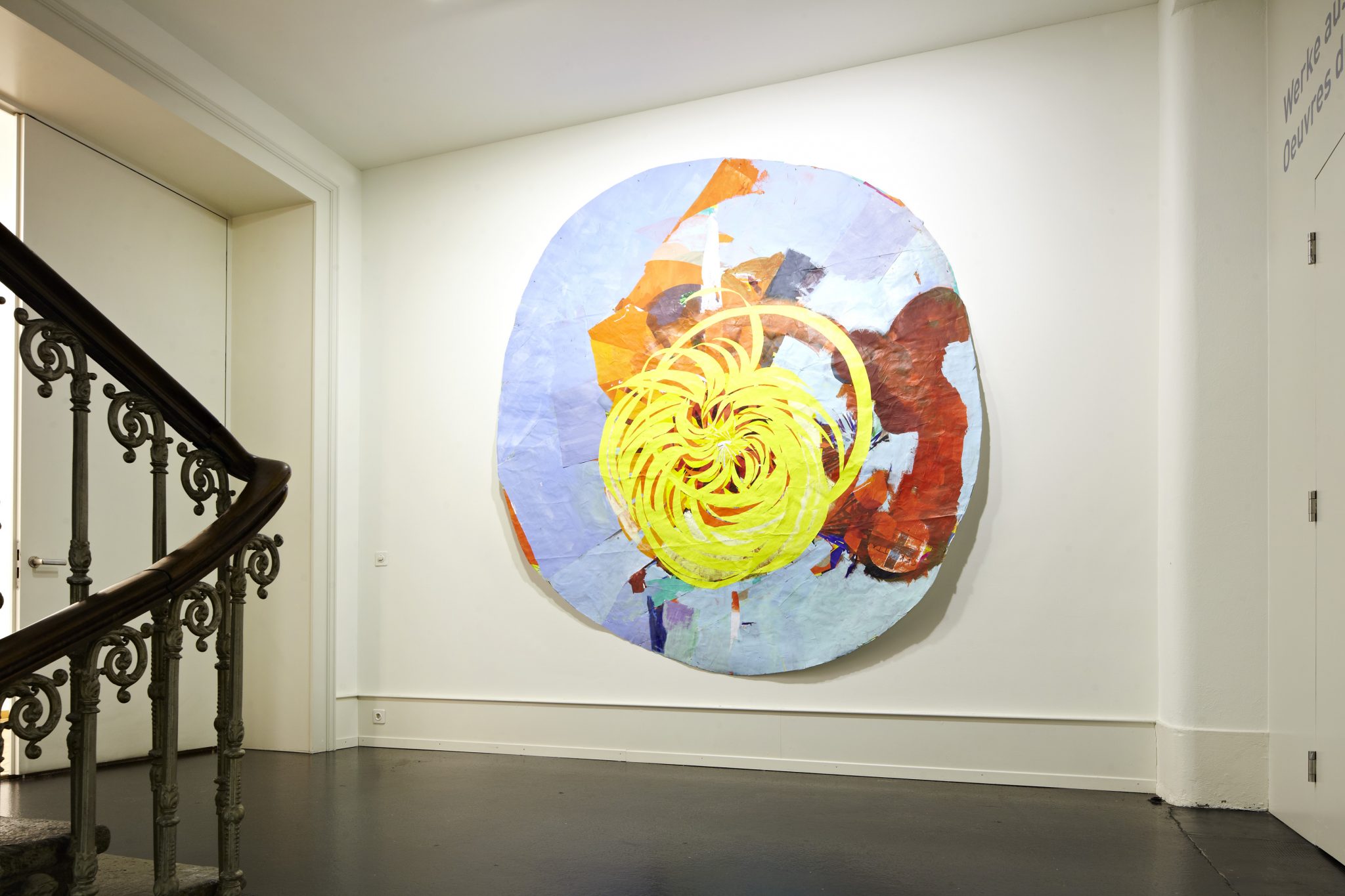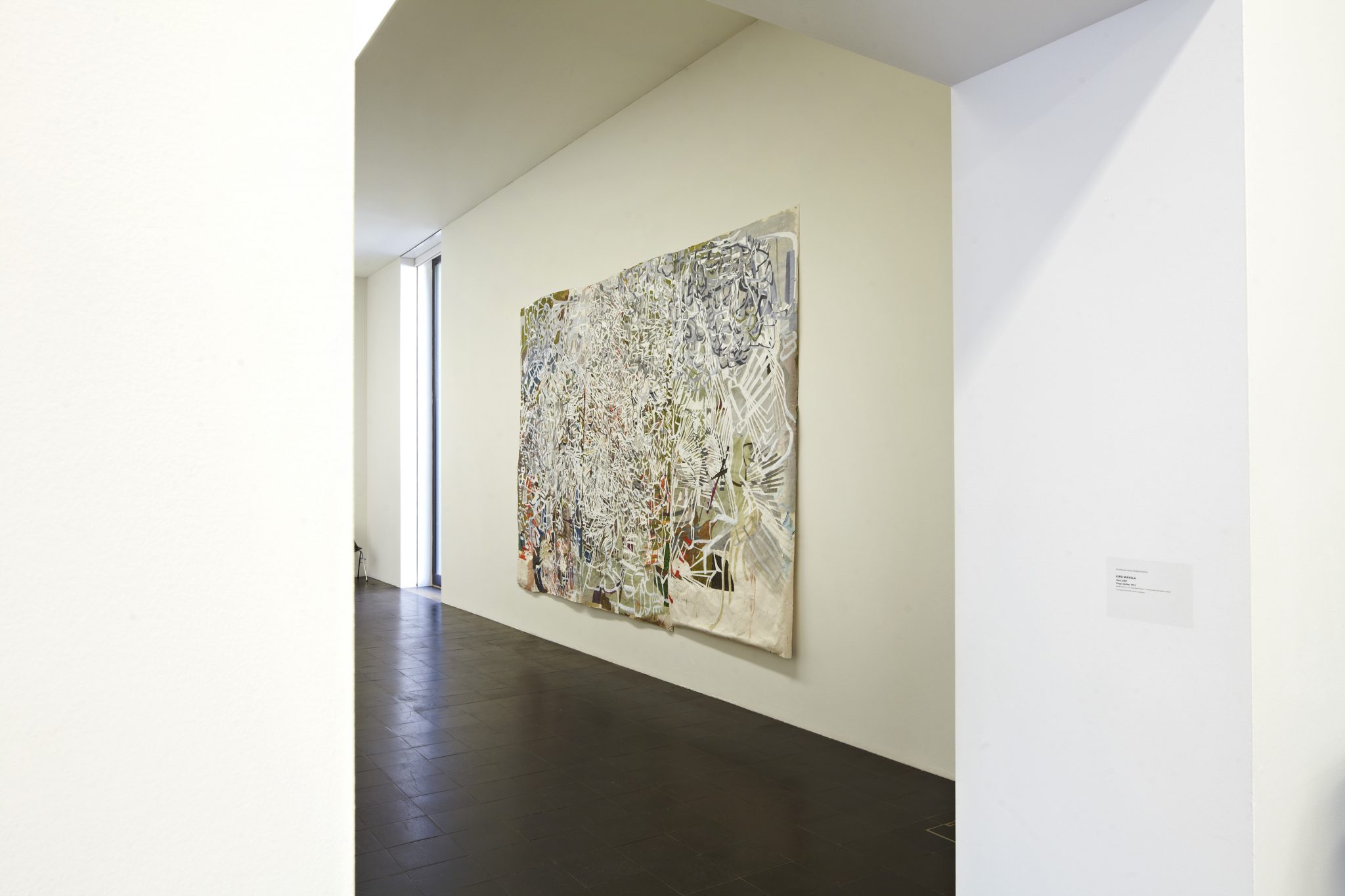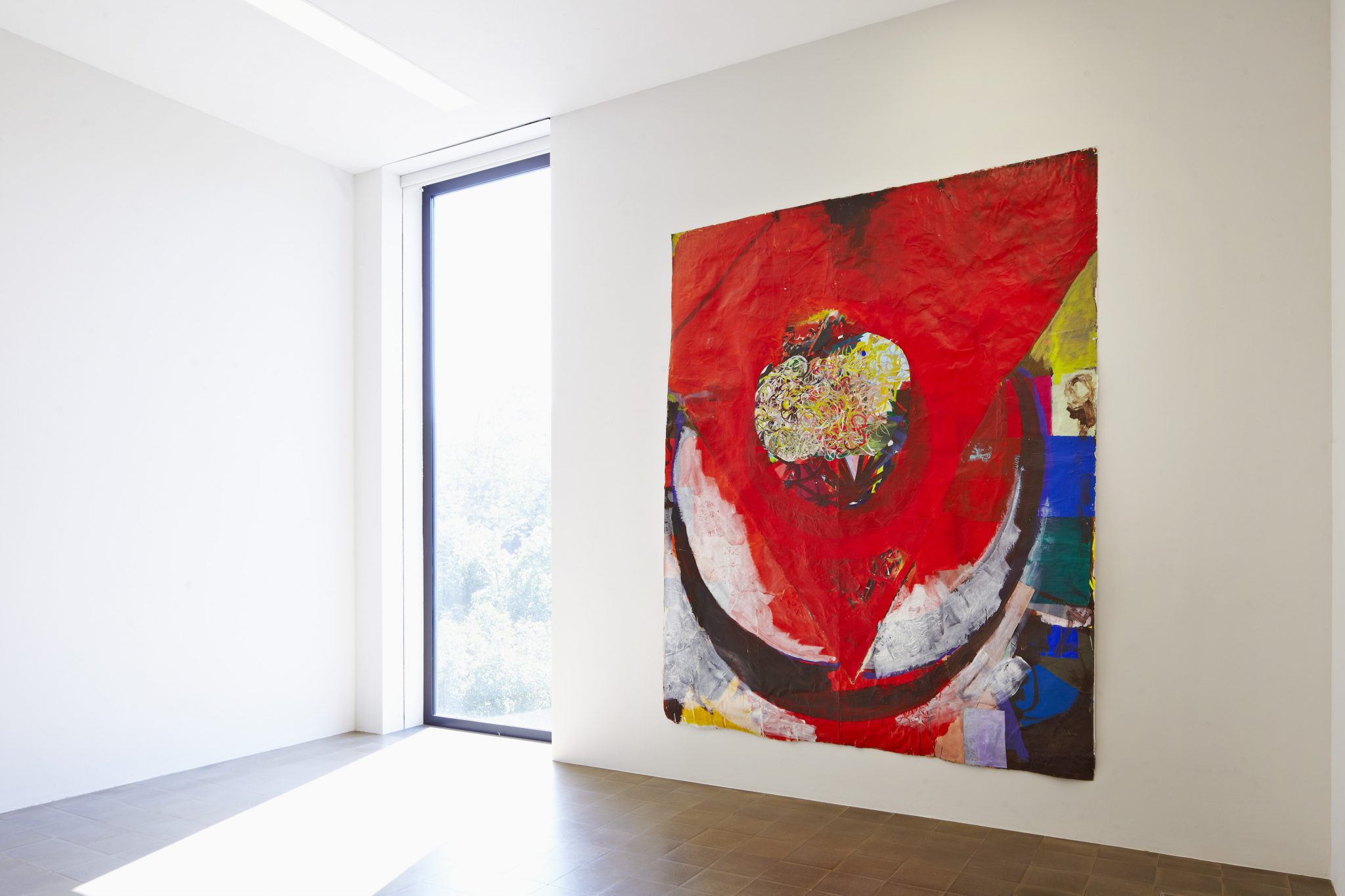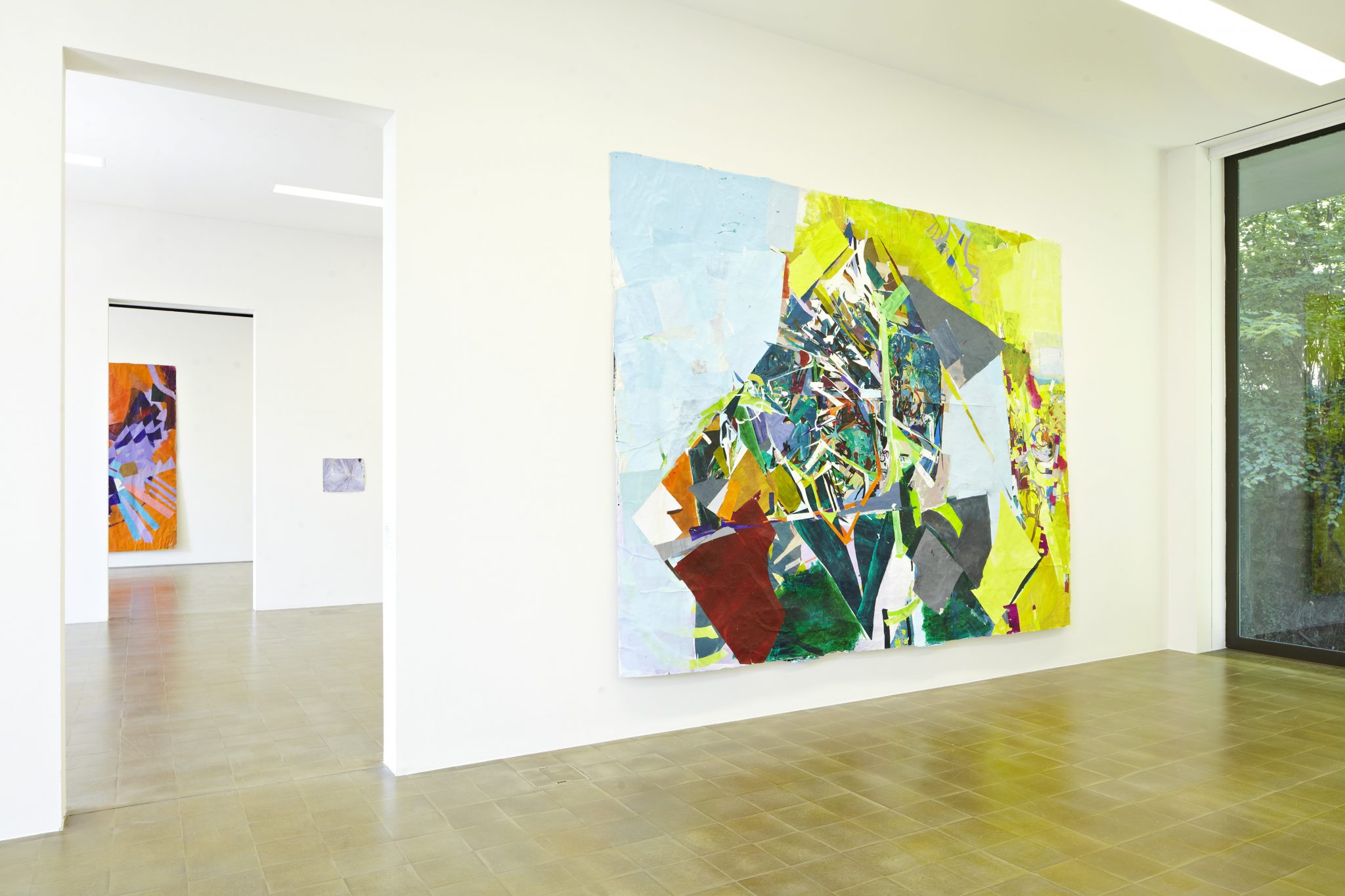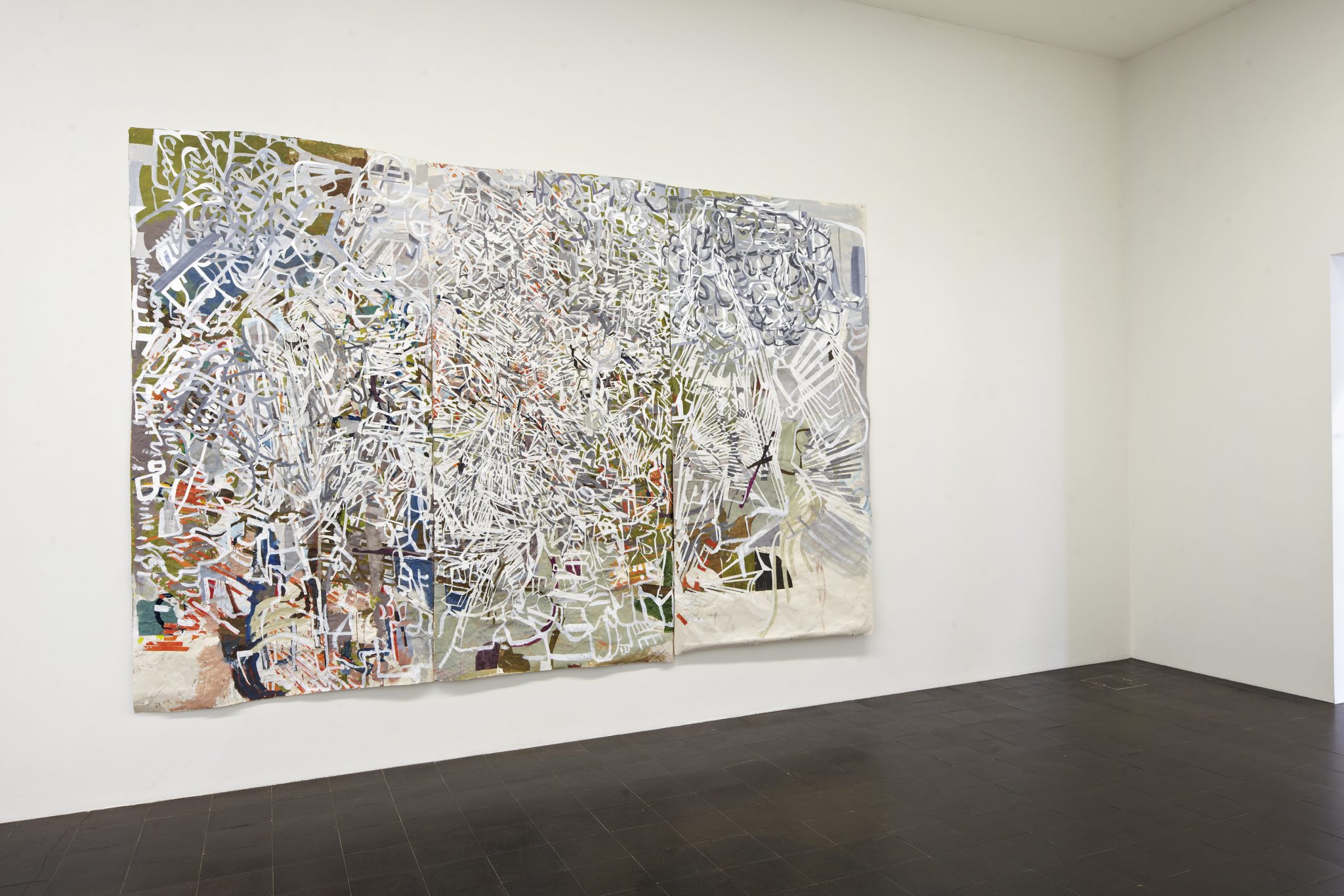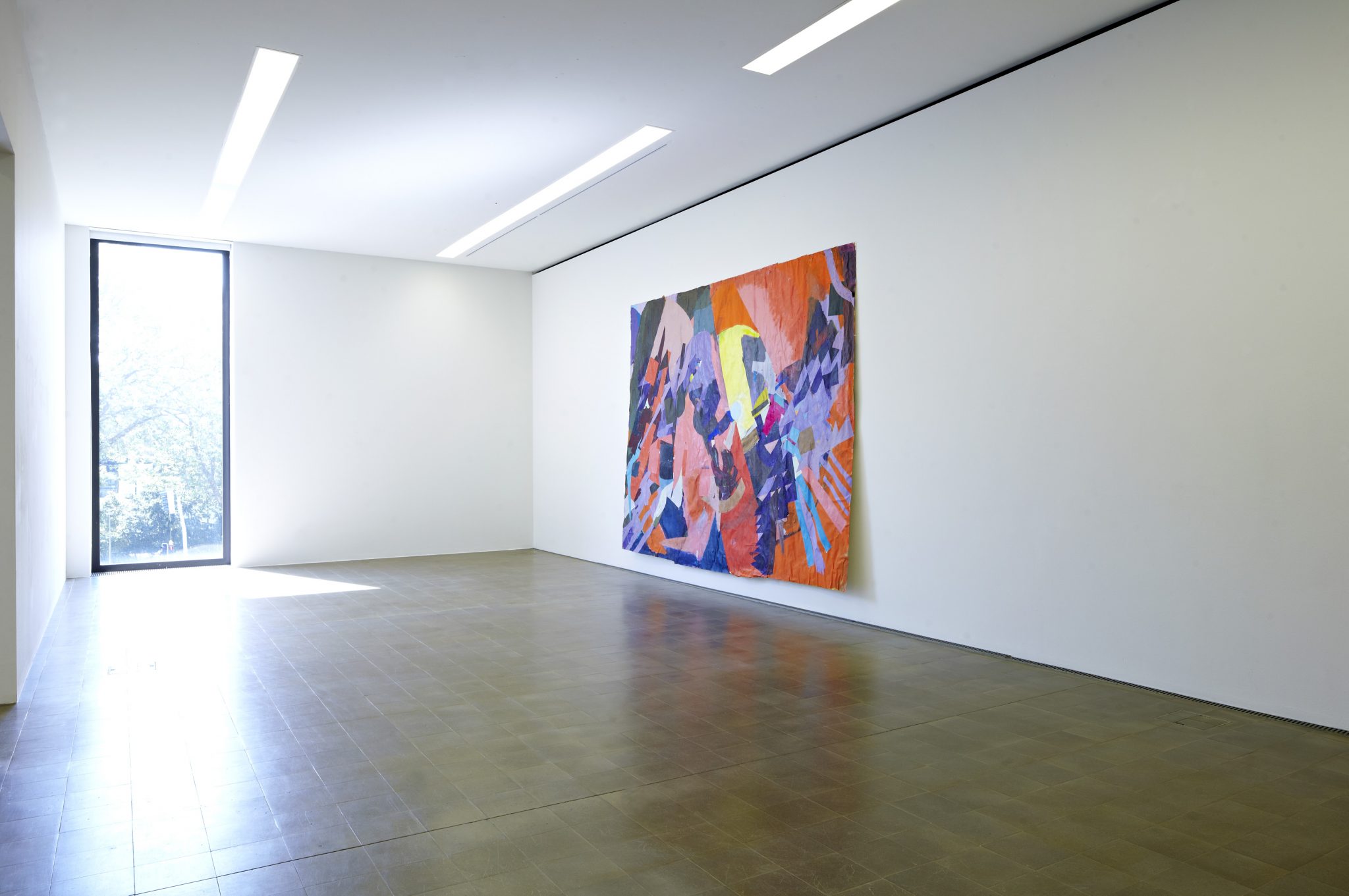

Kirsi Mikkola
1 July 2012 – 26 August 2012
Kirsi Mikkola
1.7.2012 – 26.8.2012
The Art Centre Pasquart presents the first institutional one-person exhibition of the Finish artist, Kirsi Mikkola (*1959), who lives in Berlin. In the last few years Mikkola has been concentrating on a very distinct form of abstract painting. In the place of brushstrokes she combines countless strips and fields of coloured paper, laying them next to each other or overlapping them. In both the large and small format works Mikkola continually surpasses her own limits with complex filigree structures and often dissonant colours. She herself describes her paintings less as a process concerning the production and refinement of a harmonious whole but rather as an act of concentrated eruption.
For many years Kirsi Mikkola has been involved intensively and in an unconventional manner with the medium of painting. Instead of applying pigment directly to a surface, the artist covers sheets of paper with monochrome colour and cuts these to create a variety of forms, from tiny, matchstick-sized strips to more expansive arcs and irregular shapes. The different elements are then combined to form potently coloured paintings in which every form of figuration is avoided.
Thus the complex structures created by the Finish artist come close to the ideal of abstraction as the result of eliminating all referential elements. Her paintings refer to nothing but themselves and do not even trigger associations, mental images or memories. At most, it is possible to talk of the visual representation of forces in Mikkola’s work—gravity, suspension, weight, movement—abstract notions that have a parallel in the forms and colour relationships of paint. Through the latter, the standard formal characteristics of abstract painting—light and heavy, mark and void, straight and curved, fast and slow—are at least hinted at.
Mikkola is also unwilling to straightjacket these works with the term ‘collage’, since it is too closely associated with either the juxtaposition of fragments of figurative images from widely differing sources (as in the work of Richard Hamilton or Hans-Peter Feldmann,) or the process of achieving a tactile surface quality. The term is insufficient for Mikkola’s layers of paper that refuse to be contained by the traditional pictorial rectangle, overflowing the normal boundaries between the object of the painting and the space of the viewer. If the pieces of paper in her work were replicated in paint, they might recall the Hard Edge paintings of Ellsworth Kelly or Miriam Schapiro. However, Mikkola is drawn much more to Paul Klee’s work, which similarly defies categorisation.
The exhibition includes both large format as well as smaller paintings. Whereas the dimensions of the former are equal to the walls of Mikkola’s studio, the dense, hypnotic surfaces of the smaller ones inevitably encourage a more intimate encounter. However, it is not only the large paintings which have a monumental presence. The smaller works demand attention just as tenaciously and, in spite of their restrictions in scale, retain the expansive and open quality of their more all-encompassing counterparts. The palette is off-key—grubby violets, murky greens, and a range of soft greys—and reduced in each work to one main tone that occupies the surface as the last application of paper. This main colour often takes a starburst form, radiating out from (or into, depending on the viewer’s perception) the centre and pinning the swirling mass of smaller forms beneath.
As an attempt to redefine abstraction, Kirsi Mikkola’s work is situated on the edge of painting, beyond common comparisons with other artists or the familiar references to reality. In spite of—or, perhaps, because of—this, she makes a powerful contribution to the discourse on painting, to the very idea of the contemporary. Imbued with experience and conviction, the works nevertheless have a freshness and vivacity, and arise from the understanding that the most compelling works of art contain an inner stillness that never entirely reveals itself.
Curator of the exhibition: Felicity Lunn, Director Art Centre Pasquart
Publication: In conjunction with the exhibition a richly illustrated publication (German/French/English), with a text by Felicity Lunn, has been produced by Kerber Verlag.
